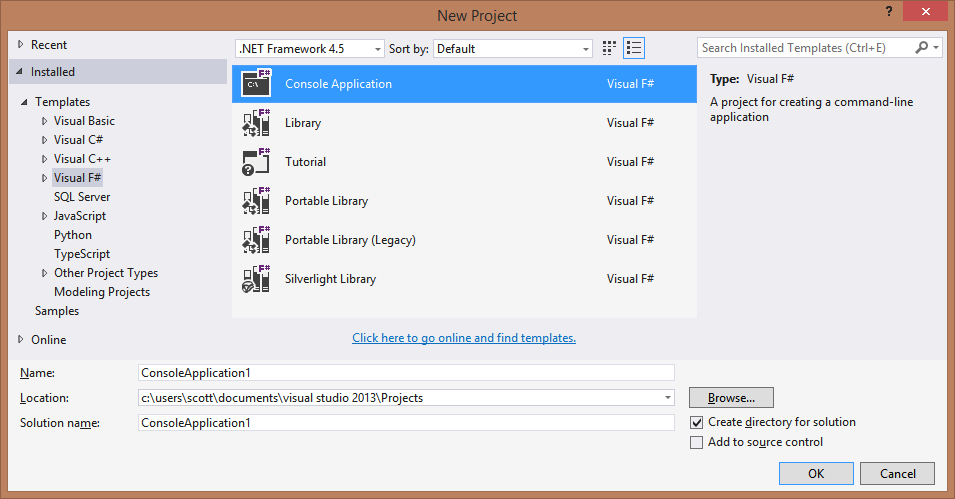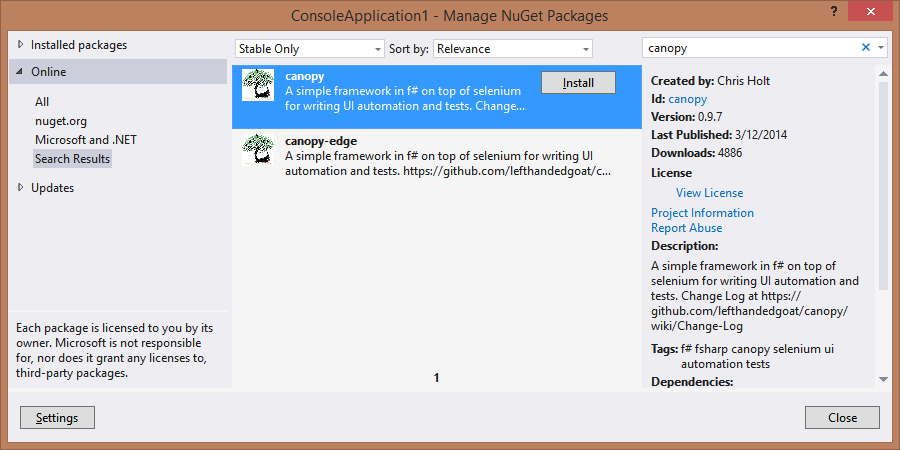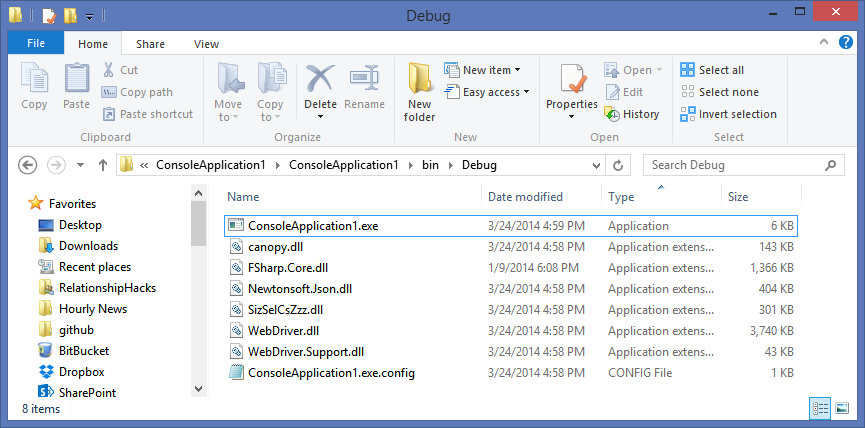NuGet Package of the Week: Canopy Web Testing Framework with F#
I've been exploring Automated Browser Testing recently, and also checking out F# for unrelated reasons. However, when you combine the two you end up with "canopy." Canopy is a "f#rictionless web testing" framework that combines the flexibility of Selenium with the clean look of the F# language. F# is much terser (more elegant, even) than C#, and is garnering the interest of a lot of the .NET Open Source community. Folks are creating cool domain specific languages of their own using F# as the base.
You already have F# and perhaps didn't realize you did! If you don't, there's lots of ways to get F# for free. You can use F# for free with VS2013 Desktop Express plus Visual F# Tools 3.1.1.
F# is open source and cross platform, running on Linux, Mac OS X, Android, iOS, Windows as well as HTML5 and GPUs. F# is free to use and has an OSI-approved open source license.
Even if you don't feel like installing anything, you can learn and play with F# in your browser now! Check out http://www.tryfsharp.org
Also check out FunScript, which is F# to JavaScript! Don't believe them? Try Pacman using F# and JavaScript with source!

Anyway, back to Canopy. Make a new Console app and NuGet in the canopy package:

The NuGet package will bring in Selenium as a dependency.
Then, try out their "Hello World" web testing sample, that I've also pasted here.
//these are similar to C# using statementsopen canopyopen runneropen System//start an instance of the firefox browserstart firefox//this is how you define a test"taking canopy for a spin" &&& fun _ -> //this is an F# function body, it's whitespace enforced //go to url url "http://lefthandedgoat.github.io/canopy/testpages/" //assert that the element with an id of 'welcome' has //the text 'Welcome' "#welcome" == "Welcome" //assert that the element with an id of 'firstName' has the value 'John' "#firstName" == "John" //change the value of element with //an id of 'firstName' to 'Something Else' "#firstName" << "Something Else" //verify another element's value, click a button, //verify the element is updated "#button_clicked" == "button not clicked" click "#button" "#button_clicked" == "button clicked"//run all testsrun()System.Console.WriteLine("press [enter] to exit")System.Console.ReadLine() |> ignorequit() |
And boom, it just works. You can run this .NET application just like any other. .NET apps are .NET apps, as they say. It doesn't matter what language it's written in. When (if) you distribute this application you'd just include the contents of your Debug folder. No need to "install" F# or anything on the target machine.

You can do all sorts of Selenium testing with canopy, like:
//start a bunch of browsers and switch aroundstart firefoxlet mainBrowser = browserstart chromelet secondBrowser = browser//switch back to mainBrowser after opening secondBrowserswitchTo mainBrowser//take screenshotslet path = Environment.GetFolderPath(Environment.SpecialFolder.ApplicationData) + @"\canopy\"let filename = DateTime.Now.ToString("MMM-d_HH-mm-ss-fff")screenshot path filename//get an elementelement "#firstName" |> someParent//press buttonspress tabpress enterpress downpress uppress leftpress right//check and click thingscheck "#yes"click "#login"//or even drag things!drag ".todo" ".inprogress" |
Oh, and by the way, the canopy library builds itself using FAKE, the F# Build System we talked about last week! Go check these projects out and offer to help or support them. There's a lot of interesting open source happening in the .NET space lately that may have been flying under your radar.
Related Links
- NuGet Package of the Week: FluentAutomation for automated testing of Web Applications
- Distributed Automated Browser Testing with Selenium and BrowserStack
- Exploring FAKE, an F# Build System for all of .NET
About Scott
Scott Hanselman is a former professor, former Chief Architect in finance, now speaker, consultant, father, diabetic, and Microsoft employee. He is a failed stand-up comic, a cornrower, and a book author.
About Newsletter
@Aashish, Attempting to use a lib that makes great use of F# language features from another CLR language can be difficult at best. I'd recommend giving it a shot and see how it feels. If you want to do some automation in C# with a concise, simple syntax check out the previous blog post on automation: NuGet Package of the Week: FluentAutomation for automated testing of Web Applications. I'd challenge anyone who says its harder to read but I really do enjoy both libs. (disclaimer: developer of FluentAutomation ;))
<input type="hidden" hidden="hidden"/>
Sir,I am little confused about this attribute hidden="hidden".What's the significance of this attribute(hidden="hidden").
Thank You.
W3Schools hidden attribute
In your blog "audo" text is rendered at top of the HTML. I can see it in this blogpost and also in your blog root URL.
Krunal.
It's been around for a long time and is very stable. I believe Canopy was modelled on Coypu which itself was modelled on the Capybara API for Ruby.
I am stuck in VS2010 at the moment, so the current maximum version I use is 0.8.9. It still has a lot of features, plus extensions are easy to create.
Having tried other UI testing libraries, canopy was the easiest out-of-the-box. The DSL is easy to master, even for those of us F# noobs. Moreover, it's a F# primer. I now have a better understanding of F# having used canopy.
I have a project I'm working on where I need to unify multiple packages (MSI, exe, etc.) into a single installer. I must resolve dependencies and conflicts as well as per-package options.
I had considered writing my own SAT solver, but if I can use, embed, or leverage NuGet somehow that would be amazing!
As always you use to write a blog with a full of information and knowledge. Thanks
Citrix Web Interface
Comments are closed.
